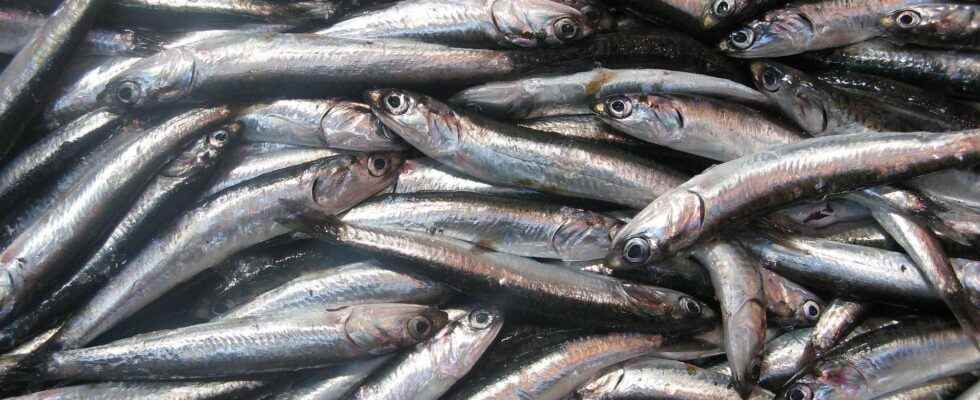In the Mediterranean, sardines have lost an average of 4 cm in ten years. Neither fishing, predators and diseases are however involved. Ifremer has just identified the culprit: the phytoplankton on which sardines feed.
” Before 2008-2009, we fished 15,000 tonnes of sardines in the Mediterranean per year. From now on, we bring back less than 1,000 tons », Sighs Bertrand Wendling, director of the fishing cooperative of Sète (Hérault), in The Parisian. And yet it is not for lack of quantity: the sardine banks are still so numerous. So what is going on? The reason for this drop in catches is that the sardines are getting smaller and smaller : ” Since the 2000s, in the Mediterranean, their size has increased from 15 to 11 cm on average, their weight from 30 to 10 g, and sardines over two years old have disappeared. », Attests Ifremer, which has been trying to understand this phenomenon for 10 years.
Plankton less and less nourishing
The researchers considered several hypotheses: the overfishing ? More natural predators, such as the tuna and the dolphins? A virus ? They eventually came to the conclusion that the reduction in the size of sardines is related to the modification of their diet. ” Plankton is less and less nourishing, sums up Jean-Marc Fromentin, researcher at Ifremer in Sète. Satellite images clearly show a decrease in the amount of microalgae from the mid-2000s, by up to 15%. That is to say precisely when we began to observe the decrease in size of the sardines “.
Fish that took in larger plankton quickly returned to normal size
Not only is there less plankton, but it is smaller. The size of the food has a direct influence on the size of the fish. ” A sardine given small food must have a double portion to grow like a sardine with large food », Explains Claire Saraux, researcher at the CNRS and who took part in this work.
When planktonic cells are smaller, the sardine consumes them in ” filtration »Through his gills, which involves sustained swimming for a long period of time. With large food, the sardine gobbles up its prey one by one, which requires a much shorter swimming time and therefore a lower expenditure ofenergy. To demonstrate this phenomenon, the researchers fed sardines for seven months with plankton of different sizes, and the Pisces having absorbed larger plankton quickly returned to normal size, confirms Claire Saraux.
Global warming at work?
But then what is it that causes the decrease in the size of plankton in the Mediterranean? Several factors would be involved here, including a drop in nutrients brought by the Rhône (paradoxically due to better water quality), changes in atmospheric and oceanic circulation, as well as an overall increase in temperature of 0.5 ° C in 30 years on average, in connection with climate change. ” For example, there is more wind, which mixes the water column », Comments Claire Saraux.
A decline in phytoplankton is linked to the weakening of the meridional ocean circulation due to warming
The Mediterranean is unfortunately not the only one concerned. In 2019, a study showed a worrying decline in phytoplankton in the North Atlantic since the beginning of the industrial era. A decline which would, again, be linked to the weakening of the meridian ocean circulation (Amoc) due to warming. In 2017, another study had shown that a higher temperature correlated with a lack of oxygen in the oceans results in a reduction in the size of fish such as Salmon, tuna, sharks or cod, which see their metabolism accelerate. ” The size of fish is reduced by 20-30% with each additional degree “, Says William Cheung, director of the Nereus Program and lead author of the article.
Mini sardines impossible to sell
All this is not without consequences. ” When they are too small, sardines no longer sell, notes Bertrand Wendling. Individuals no longer want them, because they fall through the barbecue grills “. Sardines that are too small are also refused by the conservatives, who would then have to put twice as much per can, which multiplies the labor costs. Will the big, greasy canned sardine soon become a luxury item?
You like our articles and the popular science work produced by our journalists? You can support us today by joining our subscriptions on Patreon!
Two subscription formulas are available to you with the following advantages:
- ” Futura ad-free »: Benefit from guaranteed access without advertising on the whole site for € 3.29 / month (+ VAT).
- ” I participate in the life of Futura »: In addition to ad-free access, take part in the life of our independent media (votes, new content, polls, etc.) for € 6.29 / month (+ VAT).
Interested in what you just read?
.
fs11
